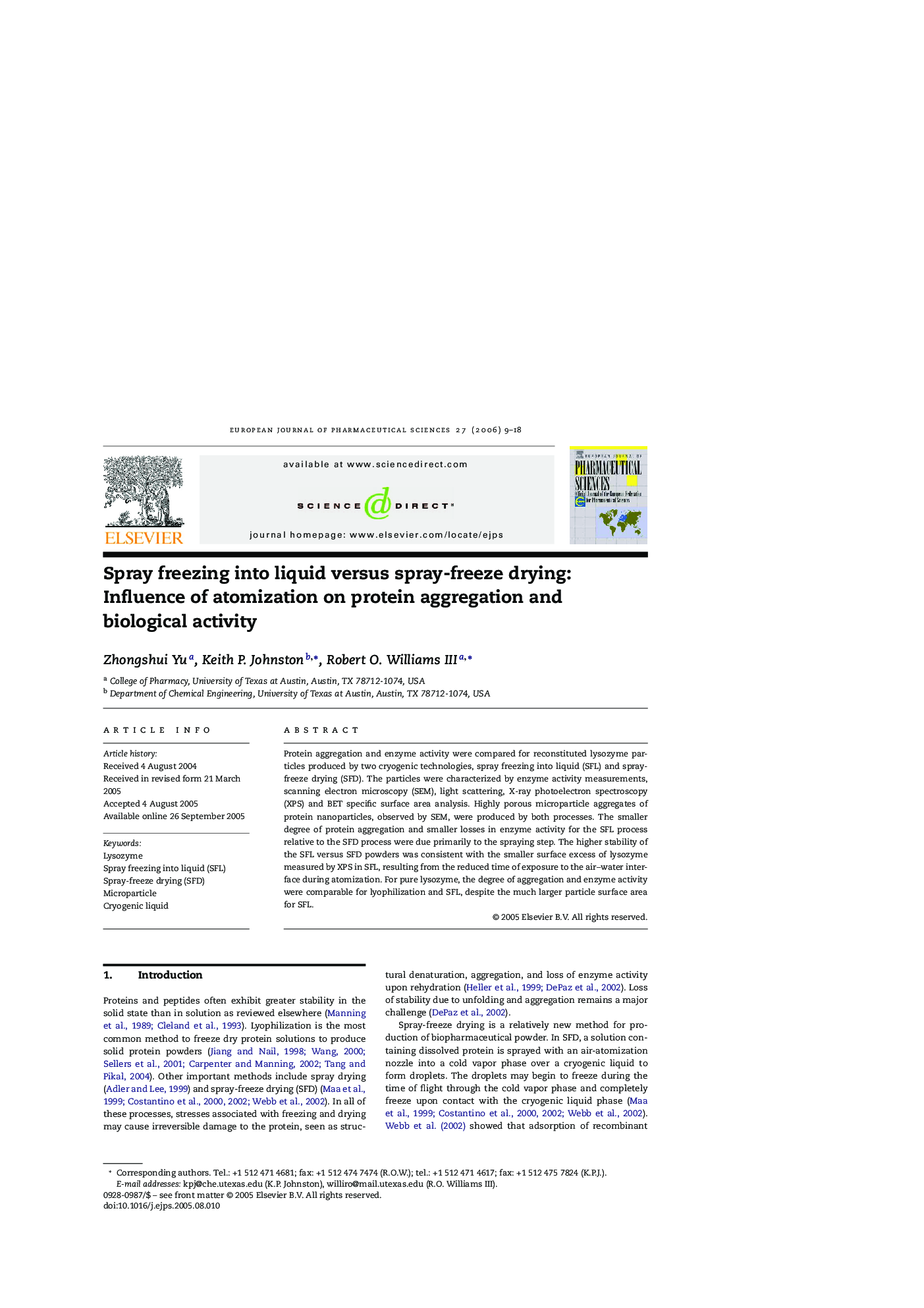| Article ID | Journal | Published Year | Pages | File Type |
|---|---|---|---|---|
| 2482670 | European Journal of Pharmaceutical Sciences | 2006 | 10 Pages |
Protein aggregation and enzyme activity were compared for reconstituted lysozyme particles produced by two cryogenic technologies, spray freezing into liquid (SFL) and spray-freeze drying (SFD). The particles were characterized by enzyme activity measurements, scanning electron microscopy (SEM), light scattering, X-ray photoelectron spectroscopy (XPS) and BET specific surface area analysis. Highly porous microparticle aggregates of protein nanoparticles, observed by SEM, were produced by both processes. The smaller degree of protein aggregation and smaller losses in enzyme activity for the SFL process relative to the SFD process were due primarily to the spraying step. The higher stability of the SFL versus SFD powders was consistent with the smaller surface excess of lysozyme measured by XPS in SFL, resulting from the reduced time of exposure to the air–water interface during atomization. For pure lysozyme, the degree of aggregation and enzyme activity were comparable for lyophilization and SFL, despite the much larger particle surface area for SFL.
